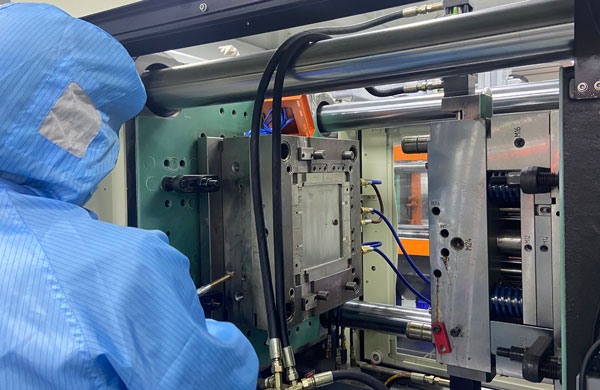Demolding issues frequently arise in injection molding, posing significant challenges to product quality. From minor surface scratches and pattern distortions to severe warping and cracking, these problems demand thorough resolution. The following sections delve into solutions from four perspectives: equipment, mold design, production process, and raw materials.
Equipment: Precise Control of Ejection Force
The ejection force, crucial for pushing products out of molds, must be adequately controlled. Different sizes, structural complexities, and clamping forces require tailored adjustments to ensure smooth demolding.
Mold Design: Details Make the Difference
Rational Demolding Structure: Careful consideration of parting line position, obstacle-free demolding direction, minimized friction, and optimal demolding points is essential.
Precise Parting Angle: The mold parting angle should exceed standard requirements, ensuring product size accuracy while facilitating smooth demolding and maintaining product gloss.
Ventilation System: Proper ventilation is vital for releasing adsorption forces due to temperature differences, preventing demolding obstacles caused by air pressure differentials.
Surface Roughness Control: Reducing mold and runner surface roughness minimizes demolding resistance.
Harmonious Feed Gate and Nozzle Design: Avoiding material accumulation at the feed gate through reasonable design reduces post-cooling restraint forces, ensuring smooth demolding.

Production Process: Precision Control to Avoid Pitfalls
Balance of Mold and Injection Temperatures: Precisely controlling temperatures ensures adequate material cooling, crucial for demolding.
Scientific Injection Volume Control: Avoiding excessive injection volume prevents mold expansion, facilitating demolding.
Optimal Cycle Time Setting: Adjusting injection pressure, holding time, and cooling time to avoid demolding difficulties while ensuring product quality is critical.
Raw Materials: The Art of Lubrication
Appropriate Lubricant Addition: Adequate lubricant content in raw materials enhances material flow and demolding performance. For insufficient lubrication, timely and appropriate addition is necessary.
Cautious Use of Reworked Materials: While cost-effective, reworked materials may cause demolding issues due to multiple high-temperature exposures and lubricant loss. Careful selection and blending are essential.
In summary, resolving demolding issues requires meticulous optimization of every aspect to achieve efficient and high-quality injection molding.